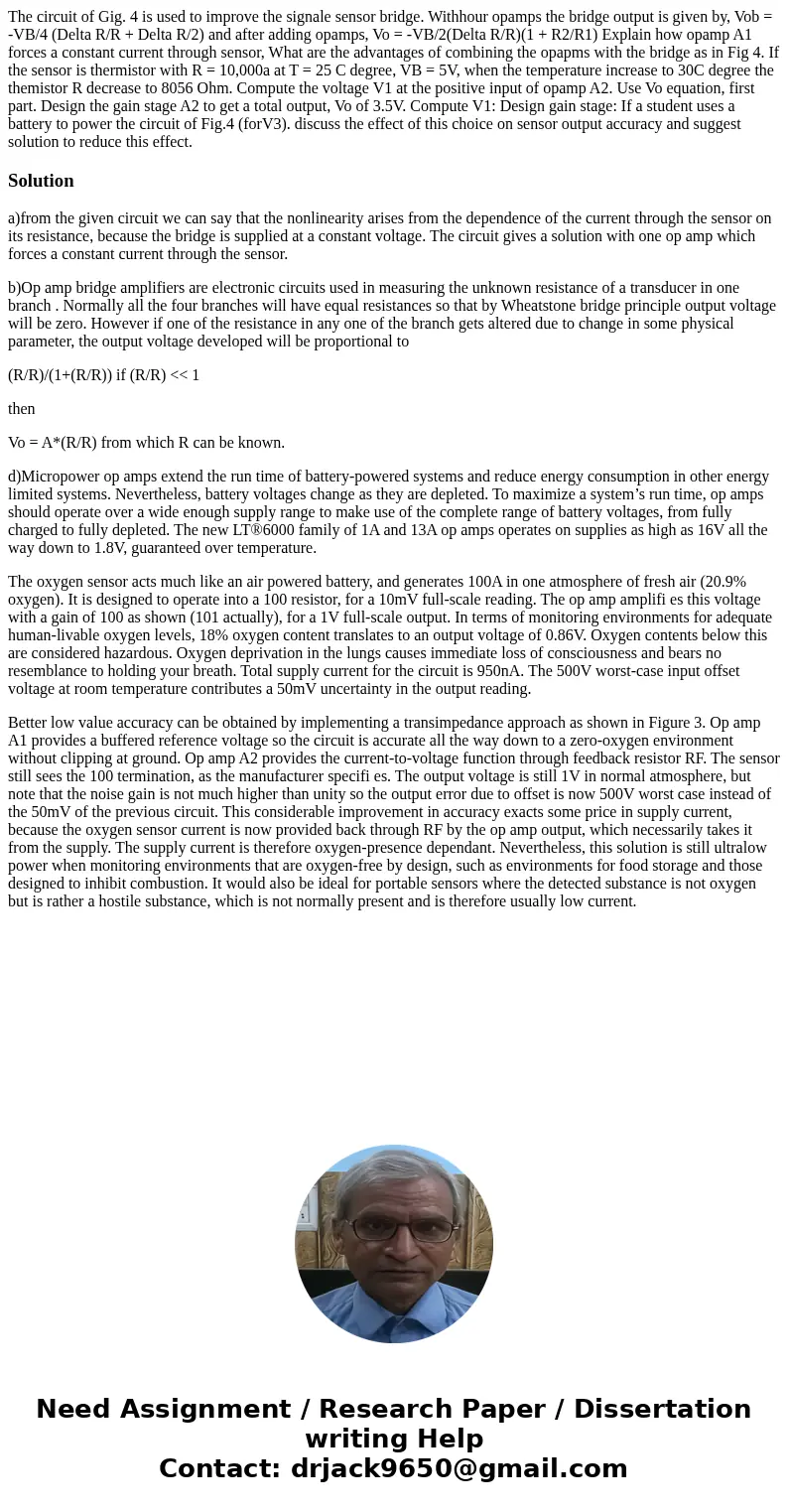The circuit of Gig 4 is used to improve the signale sensor b
Solution
a)from the given circuit we can say that the nonlinearity arises from the dependence of the current through the sensor on its resistance, because the bridge is supplied at a constant voltage. The circuit gives a solution with one op amp which forces a constant current through the sensor.
b)Op amp bridge amplifiers are electronic circuits used in measuring the unknown resistance of a transducer in one branch . Normally all the four branches will have equal resistances so that by Wheatstone bridge principle output voltage will be zero. However if one of the resistance in any one of the branch gets altered due to change in some physical parameter, the output voltage developed will be proportional to
(R/R)/(1+(R/R)) if (R/R) << 1
then
Vo = A*(R/R) from which R can be known.
d)Micropower op amps extend the run time of battery-powered systems and reduce energy consumption in other energy limited systems. Nevertheless, battery voltages change as they are depleted. To maximize a system’s run time, op amps should operate over a wide enough supply range to make use of the complete range of battery voltages, from fully charged to fully depleted. The new LT®6000 family of 1A and 13A op amps operates on supplies as high as 16V all the way down to 1.8V, guaranteed over temperature.
The oxygen sensor acts much like an air powered battery, and generates 100A in one atmosphere of fresh air (20.9% oxygen). It is designed to operate into a 100 resistor, for a 10mV full-scale reading. The op amp amplifi es this voltage with a gain of 100 as shown (101 actually), for a 1V full-scale output. In terms of monitoring environments for adequate human-livable oxygen levels, 18% oxygen content translates to an output voltage of 0.86V. Oxygen contents below this are considered hazardous. Oxygen deprivation in the lungs causes immediate loss of consciousness and bears no resemblance to holding your breath. Total supply current for the circuit is 950nA. The 500V worst-case input offset voltage at room temperature contributes a 50mV uncertainty in the output reading.
Better low value accuracy can be obtained by implementing a transimpedance approach as shown in Figure 3. Op amp A1 provides a buffered reference voltage so the circuit is accurate all the way down to a zero-oxygen environment without clipping at ground. Op amp A2 provides the current-to-voltage function through feedback resistor RF. The sensor still sees the 100 termination, as the manufacturer specifi es. The output voltage is still 1V in normal atmosphere, but note that the noise gain is not much higher than unity so the output error due to offset is now 500V worst case instead of the 50mV of the previous circuit. This considerable improvement in accuracy exacts some price in supply current, because the oxygen sensor current is now provided back through RF by the op amp output, which necessarily takes it from the supply. The supply current is therefore oxygen-presence dependant. Nevertheless, this solution is still ultralow power when monitoring environments that are oxygen-free by design, such as environments for food storage and those designed to inhibit combustion. It would also be ideal for portable sensors where the detected substance is not oxygen but is rather a hostile substance, which is not normally present and is therefore usually low current.

 Homework Sourse
Homework Sourse